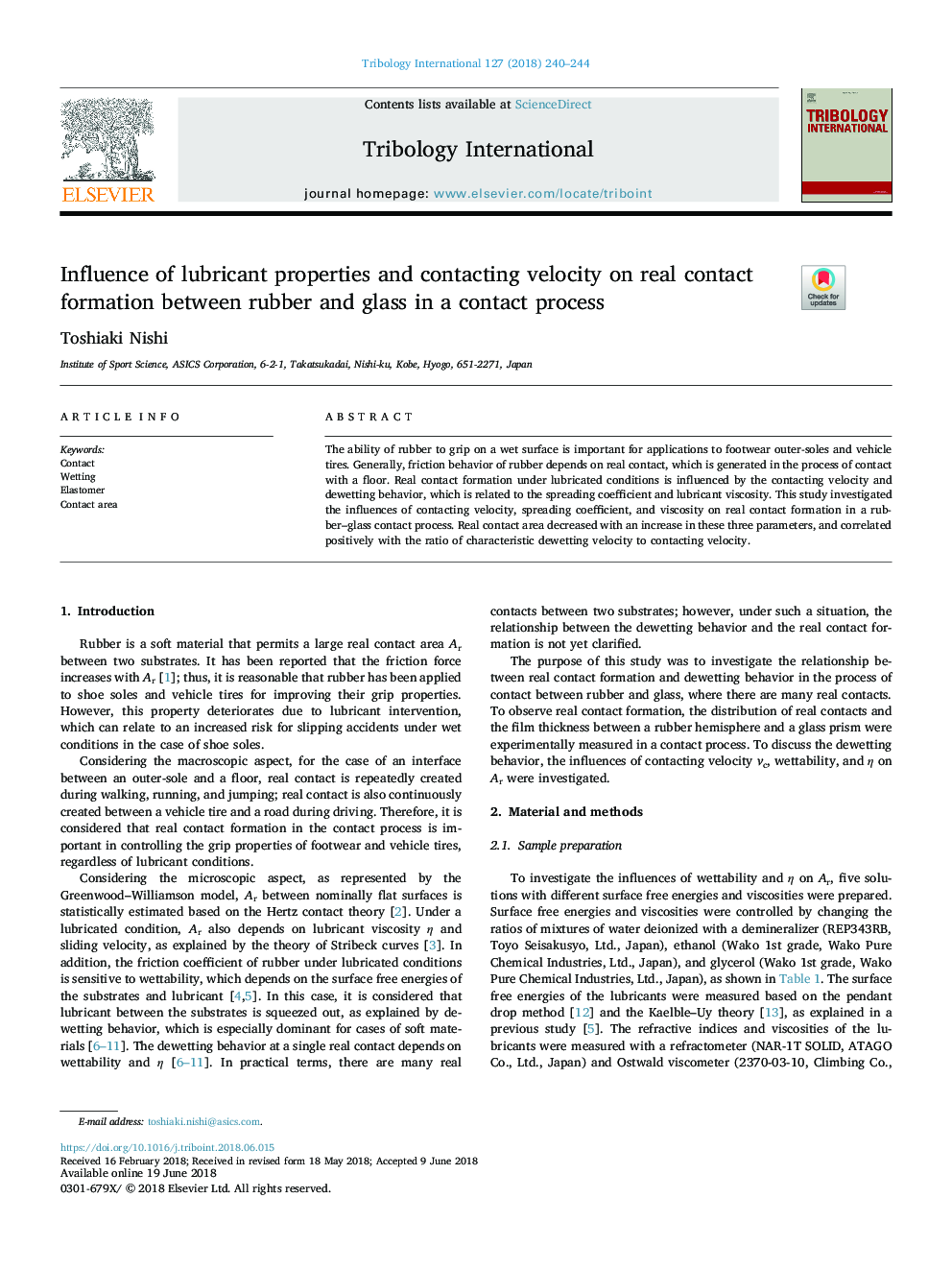| Article ID | Journal | Published Year | Pages | File Type |
|---|---|---|---|---|
| 7001378 | Tribology International | 2018 | 5 Pages |
Abstract
The ability of rubber to grip on a wet surface is important for applications to footwear outer-soles and vehicle tires. Generally, friction behavior of rubber depends on real contact, which is generated in the process of contact with a floor. Real contact formation under lubricated conditions is influenced by the contacting velocity and dewetting behavior, which is related to the spreading coefficient and lubricant viscosity. This study investigated the influences of contacting velocity, spreading coefficient, and viscosity on real contact formation in a rubber-glass contact process. Real contact area decreased with an increase in these three parameters, and correlated positively with the ratio of characteristic dewetting velocity to contacting velocity.
Keywords
Related Topics
Physical Sciences and Engineering
Chemical Engineering
Colloid and Surface Chemistry
Authors
Toshiaki Nishi,
